What Herbs Will Increase Testosterone
Do you want to grow your own herbs? Well great news, herbs are perfect for beginner gardeners because they grow well in pots and thrive on neglect. Ignore them and they probably won't even notice. Not only will herbs add flavour to your cooking, but they also look beautiful, smell incredible and will attract lots of bees and butterflies to your garden.
Herb flowers are as pretty as most ornamentals and you won't be able to stop yourself rubbing the deliciously fragrant leaves between your fingers every time you pass them – instant aromatherapy.
You can grow unusual herbs that you won't find in the supermarket, and have copious fresh leaves to hand to snip into salads and stir fries. With little effort you can be self-sufficient in kitchen basics such as parsley, rosemary, bay, thyme, chives, mint, coriander, sage, tarragon and even basil, and have more unusual herbs – such as lemon verbena, Thai basil or shiso – at your daily disposal too. Grow your own and they'll enliven every meal you eat.
Growing herbs: finding the right spot
Plant herbs as near to the kitchen as you can. You're much more likely to use them if they're close at hand. Most herbs need lots of sun to grow well. Tougher, woodier rosemary and thyme, as well as basil and sage, can cope with full sun; the more delicate coriander and parsley should be in semi-shade. Chives and mint will thrive in both positions.
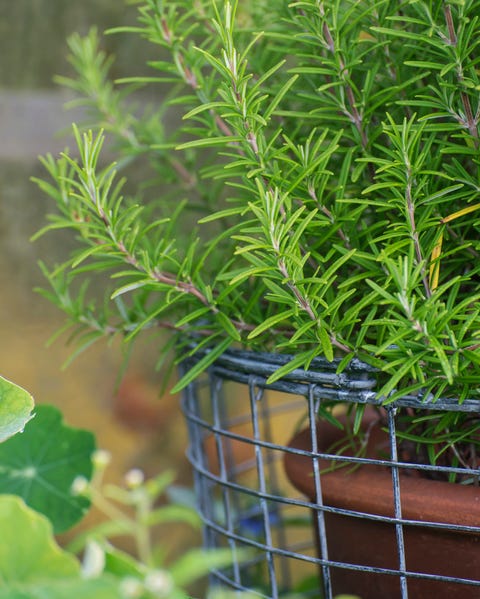
Hakan Jansson Getty Images
Herb pots, planters and raised beds
Most herbs originate from dry, hot climes and soggy, cold soil is their nemesis. Unless your garden soil is naturally light and free-draining, they are probably more likely to flourish in raised beds or pots where you can control the soil mix.
If you have raised beds, fill them two-thirds with top soil then add a third horticultural grit or perlite, so water doesn't hang around too long rotting the roots. Pots are great for herbs and rosemary, and thyme will look lovely on a terrace or hanging from a wall or fence (for pot rings try spanishrings.com). Any pot will do, but terracotta works particularly well, as the clay is porous the compost doesn't get too soggy. The larger the pot, the less frequently you'll need to water, but many herbs, such as basil (particularly Greek), thyme, oregano, chives, curly parsley and coriander, are naturally compact and fit into 20cm diameter containers. Fill them with two-thirds soil based compost such as John Innes 2 or 3 then a third horticultural grit or perlite.
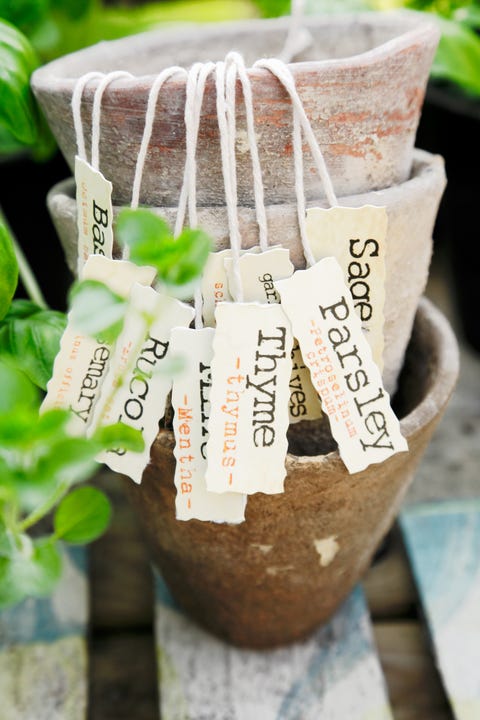
foodandstyle Getty Images
Herbs to grow
A good start is to grow what you buy. If you throw parsley, basil and coriander in your shopping trolley on a regular basis, choose these. Add other staples, such as thyme, mint for sauces and teas, rosemary and a pretty evergreen potted bay tree – the leaves are useful for soups and stews. Then if you're feeling confident, add more unusual options – chervil, sweet cicely, winter savoury, tarragon and dill are all underrated and not so easy to find in the shops.
For dramatic looks, try purple basil, tricolour sage or tall feathery fennel. The classic Bowles's mint is a great all-rounder, but why not try chocolate mint (with a scent like After Eights) or lime mint? Common thyme is delightful, but lemon or orange thyme are even more fragrant. Scented-leaved sages such as blackcurrant or pineapple smell delicious and make great syrups to add to drinks. Throw a few lemon verbena leaves into boiling water for a zingy digestif, or grow shiso to make purple martinis.
Top 12 herbs and how to use them

Basil
Why: Works well with tomatoes or fish, or use to make a traditional pesto sauce.
Which: For Italian-style cooking, look out for sweet Genovese or Napoletano. For variety, try Greek, lettuce leaf or aniseedy Thai.
BUY SEEDS

Parsley
Why: Excellent in sauces, soups, stuffings, dressings and salads, and as a garnish.
Which: Both curly and flat-leaf varieties are resilient and will keep going well into autumn, and even winter if protected with a cloche.
BUY SEEDS

Lemon thyme
Why: The aromatic foliage is versatile for cooking and attractive to wildlife.
Which: Lemon and golden varieties look lovely in pots. Plant creeping thymes between gaps in paving for subtle scent.
BUY PLANT

Chervil
Why: Its subtle aniseed flavour is greatfor soups, sauces, egg dishes and more.
Which: Curled chervil is a popular variety with pretty foliage and grows quickly from seed. Sow regularly for a constant supply.
BUY SEEDS
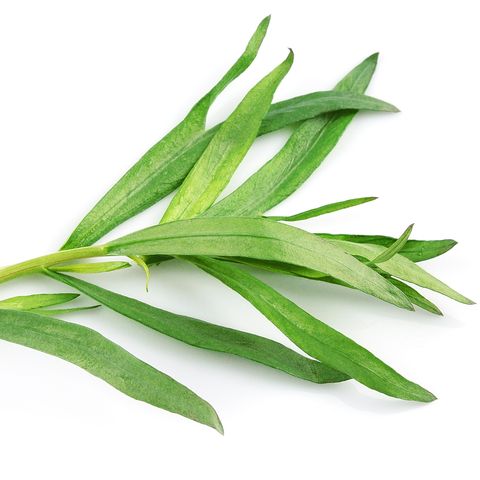
Tarragon
Why: A staple in French cooking and a classic way to add oomph to potato salad.
Which: Look out for French tarragon. The leaves are best used fresh but they can be stored or dried in an air-tight container.
BUY SEEDS

Coriander
Why: Delicious added to rice, couscousand curries. Add the flowers to salads.
Which: Coriander is quick to go to seed (called bolting) so try a bolt-resistant variety such as Santos and pick leaves young.
BUY SEEDS
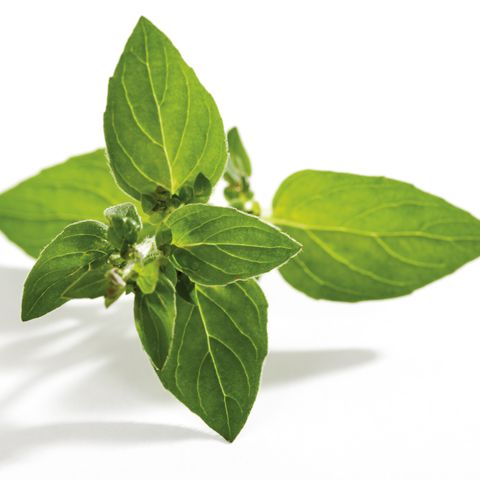
Oregano
Why: Strong and pungent, this is a classic herb for Italian, Greek and Mexican cooking and is often used dried rather than fresh.
Which: Look out for dwarf variety Kent Beauty, Common or Compact Greek.
BUY SEEDS
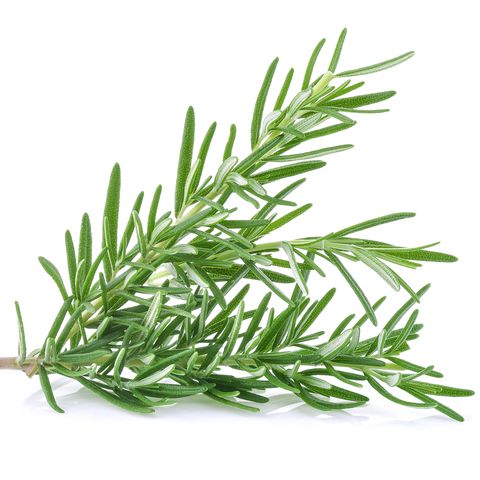
Rosemary
Why: A classic accompaniment to lamb, pork and chicken dishes.
Which: Most varieties are suitable for culinary use. Once established outside, rosemary will keep growing for years.
BUY PLANT

Bay
Why: Use in soups, stews and potato dishes. Dried is fine as the leaves retain their flavour.
Which: Common bay has dark, aromatic leaves but also look out for hardier Angustifolia and Aurea varieties.
BUY PLANT

Mint
Why: Use for everything from tea to mojitococktails and mint sauce for lamb.
Which: Common varieties include apple mint, English lamb mint and spearmint (also known as garden mint).
BUY PLANT
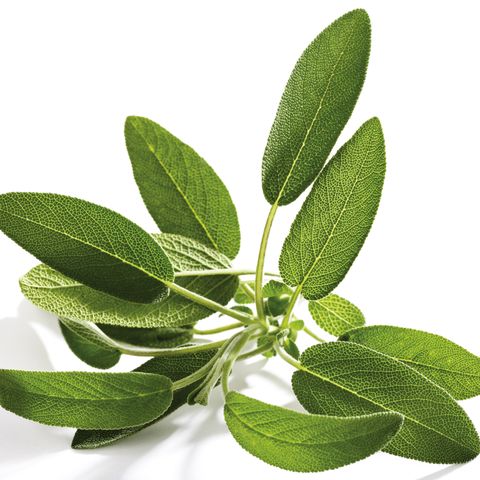
Sage
Why: The leaves work well with chicken and are good in classic sage-and-onion stuffing.
Which: Look out for common sage or try the broad-leaved variety. Buy as a ready grown plant or grow from seed or cuttings.
BUY PLANT

Dill
Why: Commonly used for potatoes and fish or add to soups, sauces and salads.
How: Grow from seed, simply by scattering in the desired location after the last frost and cover lightly with soil.
BUY SEEDS
Sowing seeds vs. buying herb plants
Sow seeds or buy small herb plants from a garden centre or online specialist. Whether you start from seed or plant depends on what herbs you choose. Annuals (which die within a year), such as basil, dill, coriander, parsley and chervil, are best grown from seed in spring in small pots or cell trays.
Parsley is a hardy biennial, while in contrast, perennials (those that last several years) such as rosemary, thyme, oregano and sage, are best bought as plants.
Throughout the summer months most herb varieties can be planted out as plugs – thanks to longer days and warm soil, they will establish very quickly. Keep them well watered and you should be able to harvest in a couple of weeks.
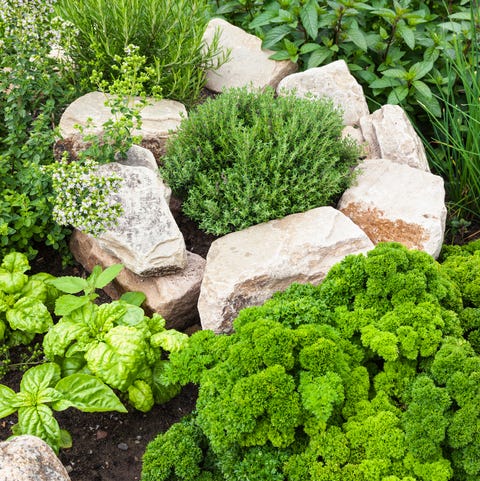
michael1959 Getty Images
How to harvest
Regular snipping is the secret to a healthy herb. Cut back to a growing point (a pair of leaves or just above a new bud) so the plant can re-sprout – never cut into the old brown wood as this can cause damage. The exceptions are chives, coriander and parsley, where you cut whole stems to the ground. Always harvest with sharp scissors to avoid bruising the stems and use a sharp knife when chopping them to keep the oils in the leaves. After flowering, trim thyme and oregano to keep the plants neat.
When to prune
Trim oregano, rosemary and thyme at the start of autumn. You can cut them back further the following spring, removing dead stems to encourage new growth. Cut chives, mint and tarragon back to the ground in autumn.
Care tips
As autumn approaches, prolong the life of herbs by protecting under cloches. Grow basil, chives, coriander, dill, parsley and mint indoors on a sunny windowsill. In winter, raise pots on feet to avoid waterlogging; place against a house wall for protection and wrap in insulation in harsh winters.
Like this article? Sign up to our newsletter to get more articles like this delivered straight to your inbox.
SIGN UP
Love what you're reading? Enjoy House Beautiful magazine delivered straight to your door every month with Free UK delivery. Buy direct from the publisher for the lowest price and never miss an issue!
SUBSCRIBE
16 great books for gardening and indoor plant inspiration
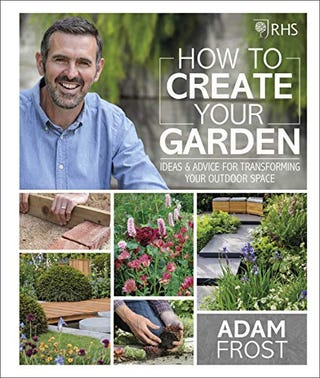
Garden book
RHS How to Create your Garden: Ideas and Advice for Transforming your Outdoor Space
Adam Frost's practical, no-nonsense approach will help you plan and build a garden that works for you. The Gardeners' World presenter takes you step by step through the whole process, from simple garden design ideas to a full garden makeover.
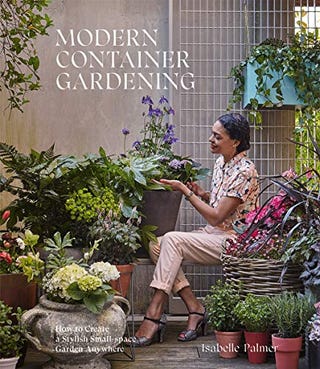
Garden book
Modern Container Gardening: How to Create a Stylish Small-Space Garden Anywhere
Isabelle Palmer shows you how to make the most of every little space with a series of projects for small gardens, singular containers and window boxes, that can be completed in a day or weekend. Perfect for novice gardeners,Modern Container Gardening offers beautiful photography and clear step-by-step instructions.
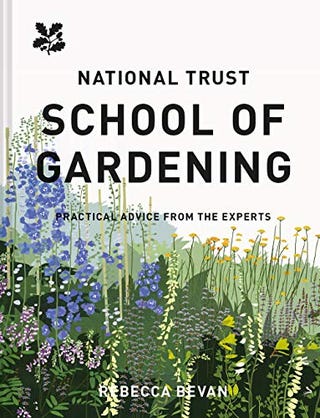
Garden book
National Trust School of Gardening: Practical Advice from the Experts
National Trust amazon.co.uk
£15.23
The National Trust employs over 500 gardeners with an extraordinary wealth of expertise. And now, in this in-depth guide, they pass on their wisdom and provide the answers any new and seasoned gardener is looking for. This book is intended to give you inspiration and confidence to make the most of your garden, without being overwhelmed with unnecessary technical detail.

Garden book
Veg in One Bed: How to Grow an Abundance of Food in One Raised Bed, Month by Month
Veg In One Bed explains how to build your bed and grow from seed, as well advice on planting, feeding, and harvesting. YouTube gardening star Huw Richards shows how to guarantee early success by starting off young plants on a windowsill and suggests what to grow in each part of the bed.

Garden book
The Complete Gardener: A Practical, Imaginative Guide to Every Aspect of Gardening
Monty Don offers straightforward gardening advice in this book, revealing the secrets of growing vegetables, fruits, flowers, and herbs, while respecting the needs of the environment by gardening organically. You can also enjoy a tour of his Herefordshire garden, including his flower garden, herb garden, kitchen garden, and more.
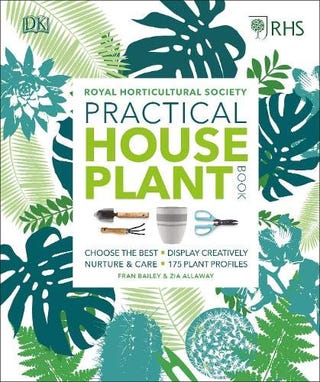
Plants book
RHS Practical House Plant Book
The Practical House Plant Book by the RHS contains a dozen step-by-step projects to help you assemble an eye-catching terrarium, create a floating kokedama 'string garden', or propagate succulents. Complete with 175 in-depth plant profiles, this is an essential practical guide for indoor gardeners.
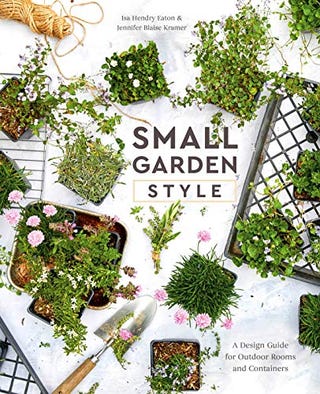
Garden book
Small Garden Style: A Design Guide for Outdoor Rooms and Containers
Ten Speed Press amazon.co.uk
£12.35
A small garden space – an urban patio, a tiny backyard, or even just a pot by your door – doesn't have to sacrifice style. InSmall Garden Style, garden designer Isa Hendry Eaton and lifestyle writer Jennifer Blaise Kramer show you how to use good design to create a joyful, elegant, and exciting yet compact outdoor living space.
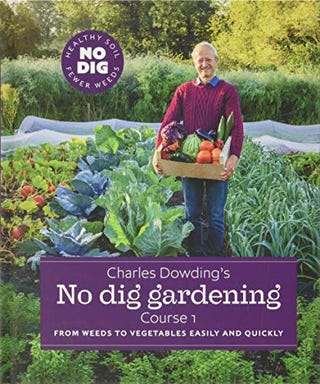
Garden book
Charles Dowding's No Dig Gardening: From Weeds to Vegetables Easily and Quickly: Course 1
No Dig Garden amazon.co.uk
£18.99
Charles Dowding, innovator of no dig, teaches you everything you need to know about this method of organic gardening. With 19 chapters, you'll learn how to use no dig on different soil types, recognise and massively reduce the different types of weeds, know the difference between soil and types of compost, and grow an abundance of vegetables using the no dig method.
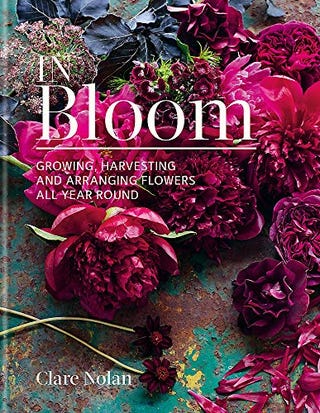
Plants book
In Bloom: Growing, harvesting and arranging flowers all year round
Kyle Books amazon.co.uk
£17.65
Get all the inspiration you need for planting cut flowers, and fill your home with colour and the gorgeous scent of the garden year-round withIn Bloom. Clare Nolan reveals her secrets for growing a bountiful harvest as well as styling spectacular homegrown displays in this beautifully designed book.
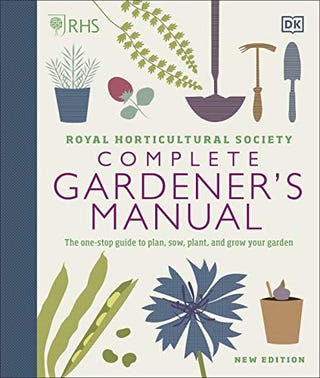
Garden book
RHS Complete Gardener's Manual
The RHS'Complete Gardener's Manual will help you choose plants that will thrive in your space, design a border for year-round colour, grasp different pruning techniques, discover how to protect your veg patch from pests, and make the best compost.

Garden book
Wildlife Gardening: For Everyone and Everything
Bloomsbury Wildlife amazon.co.uk
£10.19
Do you want to attract more bees, birds, frogs and hedgehogs into your garden? InWildlife Gardening for Everyone and Everything,Kate Bradbury teams up with the Wildlife Trusts and the RHS to help you discover how you can make your garden, balcony, doorstep or patio a haven for garden wildlife. You'll find handy charts, practical projects and fact files.

Plants book
My House Plant Changed My Life: Green wellbeing for the great indoors
Gardener and TV presenter David Domoney is a firm believer that indoor plants can make 'a practical and emotional contribution to our wellbeing'. In this book, David explains the hard science behind the positive effect of the humble houseplant on wellness, and provides expert tips on how to keep your plants thriving, plus shares his top 50 life-enhancing houseplants.

Garden book
RHS Encyclopedia of Garden Design: Planning, Building and Planting Your Perfect Outdoor Space
If you're looking for new garden ideas, theRHS Encyclopedia of Garden Design will guide you from planning to planting, such as choosing the correct materials for your structures and assessing your drainage, to laying patios, making ponds, and planting perennials.

Garden book
How to Create an Eco Garden: The practical guide to sustainable and greener gardening
Lorenz Books amazon.co.uk
£11.29
This planet-friendly book is filled with ideas for creating your own eco garden on any scale, from a small courtyard to a large garden or allotment. Discover organic techniques that improve biodiversity, learn the value of using recycled and reclaimed materials for landscaping, and take on simple projects such as making a pond and a wildlife hotel.

Plants book
RHS Encyclopedia Of Plants and Flowers
Drawing on expert advice from the RHS, this best-selling reference book – organised by colour, size, and type, rather than as an A-Z directory – will help you select the right varieties for your outdoor space.

Garden book
Build a Better Vegetable Garden: 30 DIY Projects to Improve your Harvest
Frances Lincoln Publishers Ltd amazon.co.uk
£12.55
Joyce and Ben Russell have devised 30 kitchen garden projects, devised to either extend the season, protect crops from pests or improve yields. These projects transform your vegetable plot into somewhere more productive, more attractive and more secure.
This content is created and maintained by a third party, and imported onto this page to help users provide their email addresses. You may be able to find more information about this and similar content at piano.io
What Herbs Will Increase Testosterone
Source: https://www.housebeautiful.com/uk/garden/plants/a28607754/herb-garden/


0 Komentar